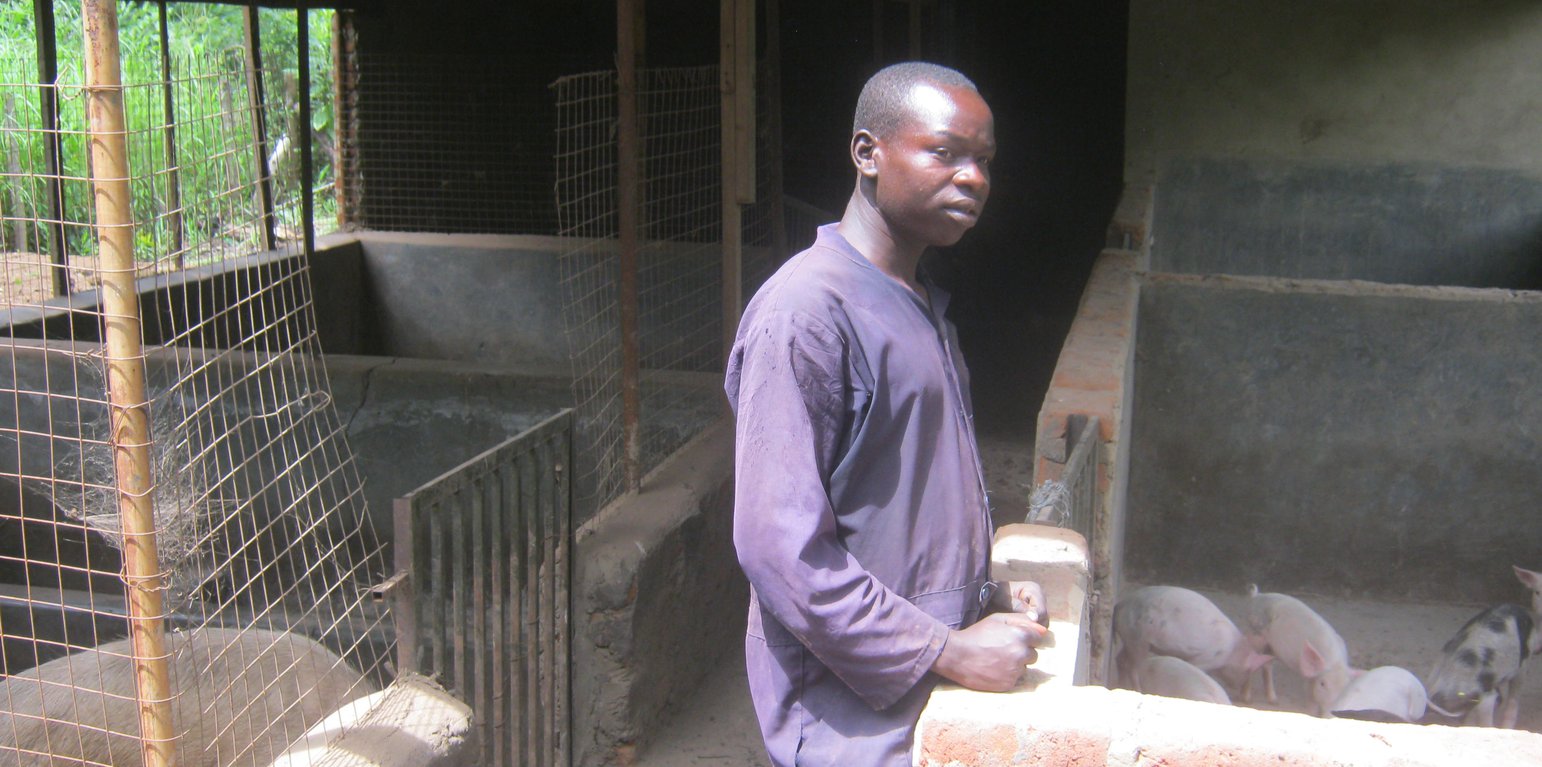



Pig farming has become a popular and lucrative business among farmers in Northern Uganda. It is considered to be a quick means of improving soil fertility and household incomes, thus improving land productivity and reducing poverty.
Pigs are normally fed reguraly on maize bran purchased or maize grain produced as the most common food ration but could also benefit from having a ratio with protein from soybeans produced on farm, and home-made feeds mainly in the form of cassava, brew waste and potatoes as well as adequate supply of drinking water for purposes of fattening, animal manure and income provision.
10-12 pigs are kept in a pen measuring 6 to 8 m wide, 8 m long and 3.5 m high with a space for feeding and bedding. The materials needed for constructing the pen are iron sheets, wood, and nails. Sanitation in pig farming is important in order to keep the pigs disease-free. Therefore, a mechanism for easy cleaning and removal of waste is necessary for any type of pig housing using sawdust. The farmer uses simple local brooms, basins, and buckets to clean and remove manure on a daily basis and applied in nearby gardens
After five to seven months, pigs are likely to have attained an ideal market weight of more than 70 – 100kg. The farmer may decide to sell or slaughter for meat. Compared to most livestock species, pigs have a higher turnover rate due to a shorter gestation period in addition to providing manure which the farmer applies on the gardens to increase soil fertility for increased food production. Pigs also have higher returns on investment due to a larger litter size and higher feed conversion ratio. These factors make pig farming a more profitable livestock enterprise, since more meat is produced and sold in a shorter period, relative to other domestic animals.
However, the farmer needs to be aware that pigs are easily attacked by bacteria and virus related diseases, which result into diarrhoea, leading to death. Treatment requires high-level skills, which may need the attention of an extension worker to provide advisory services and treatment in case they fall sick.
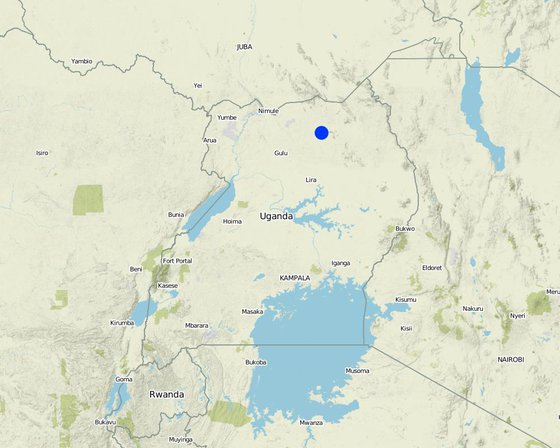
Location: Northern Region,Uganda, Uganda
No. of Technology sites analysed: single site
Spread of the Technology: applied at specific points/ concentrated on a small area
In a permanently protected area?:
Date of implementation: 2015; less than 10 years ago (recently)
Type of introduction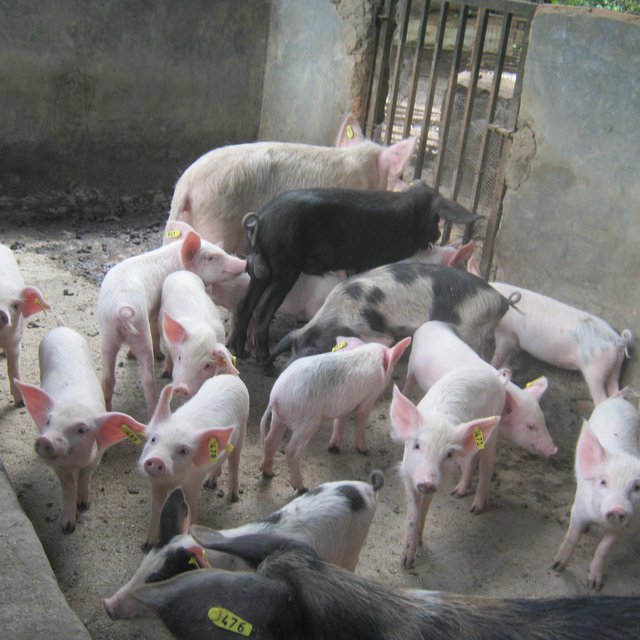
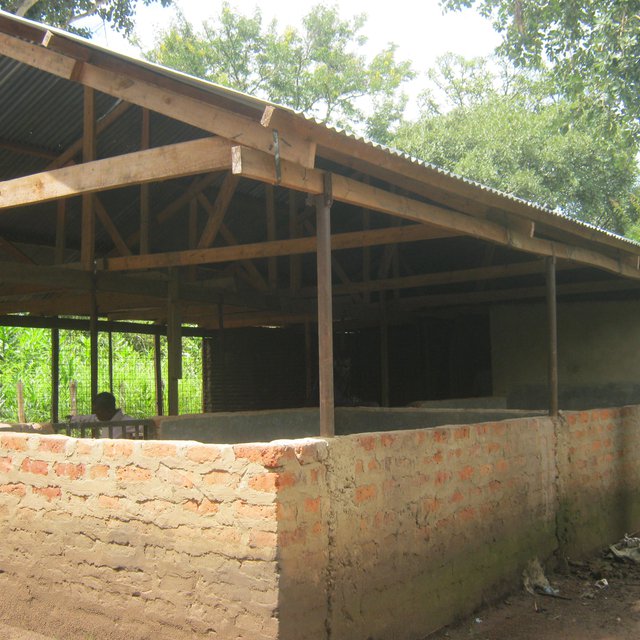





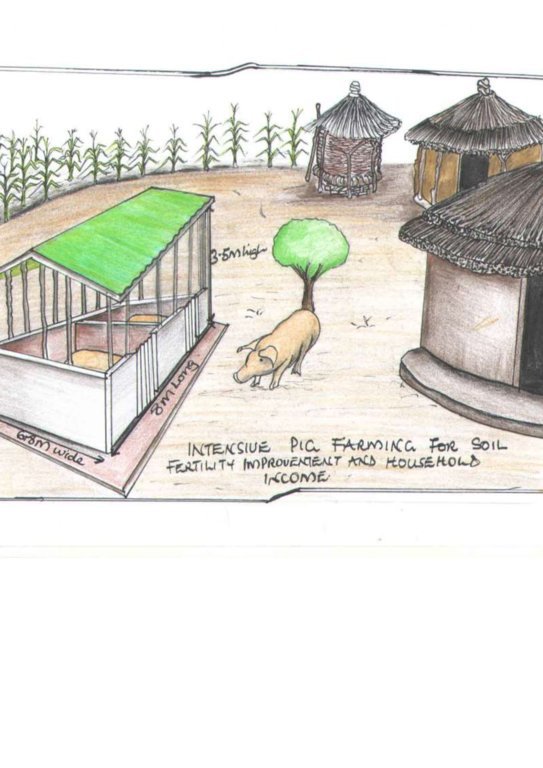
| Specify input | Unit | Quantity | Costs per Unit (UGX) | Total costs per input (UGX) | % of costs borne by land users |
| Labour | |||||
| Persons days on monthly basis | persons | 4.0 | 210000.0 | 840000.0 | 100.0 |
| Equipment | |||||
| Nails | kgs | 10.0 | 2500.0 | 25000.0 | 100.0 |
| Hoes | Pieces | 1.0 | 10000.0 | 10000.0 | 100.0 |
| Spade | Pieces | 1.0 | 10000.0 | 10000.0 | 100.0 |
| Wheel barrow | Pieces | 1.0 | 75000.0 | 75000.0 | 100.0 |
| Iron sheets | pieces | 6.0 | 20000.0 | 120000.0 | 100.0 |
| Fertilizers and biocides | |||||
| Pestcide | litres | 5.0 | 15000.0 | 75000.0 | |
| Construction material | |||||
| Poles | Pieces | 20.0 | 5000.0 | 100000.0 | 100.0 |
| wood | pieces | 15.0 | 5000.0 | 75000.0 | 100.0 |
| Other | |||||
| Feeds on weekly basis | kgs | 100.0 | 3000.0 | 300000.0 | 100.0 |
| Total costs for establishment of the Technology | 1'630'000.0 | ||||
| Specify input | Unit | Quantity | Costs per Unit (UGX) | Total costs per input (UGX) | % of costs borne by land users |
| Labour | |||||
| persons days on monthly basis | persons | 4.0 | 210000.0 | 840000.0 | 100.0 |
| 100.0 | |||||
| Total costs for maintenance of the Technology | 840'000.0 | ||||
Quantity before SLM: 0
Quantity after SLM: 250kgs
Manure application on the maize field to improve soil fertility.
Especially maize.
For feeding the pigs.
Good feeding/purchase after sell of maize.
manure application.
Quantity before SLM: 0
Quantity after SLM: 1 water harvesting tank
to be used for drinking by the pigs.
Spend on pesticides.
Quantity before SLM: 0
Quantity after SLM: 800000
sale of maize and 2 pigs.
Looking after pigs and maize on farm.
Especially with the harvest of maize.
Training on planting maize, feeding the pigs and manure application in the maize field.
Animal manure application in the maize field.
Zero grazing avoiding overgrazing.
Due to application of manure.
Zero grazing.
Pigs.
Support from extension workers.
Zero grazing as pigs are destructive.